Fortinet NSE7_SDW-7.2 Fortinet NSE 7 - SD-WAN 7.2 Exam Practice Test
Fortinet NSE 7 - SD-WAN 7.2 Questions and Answers
Which SD-WAN setting enables FortiGate to delay the recovery of ADVPN shortcuts?
Which two performance SLA protocols enable you to verify that the server response contains a specific value? (Choose two.)
Which two settings can you configure to speed up routing convergence in BGP? (Choose two.)
Refer to the exhibits.
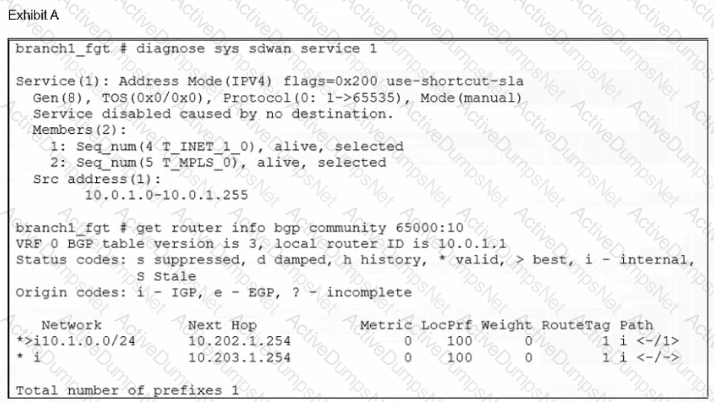
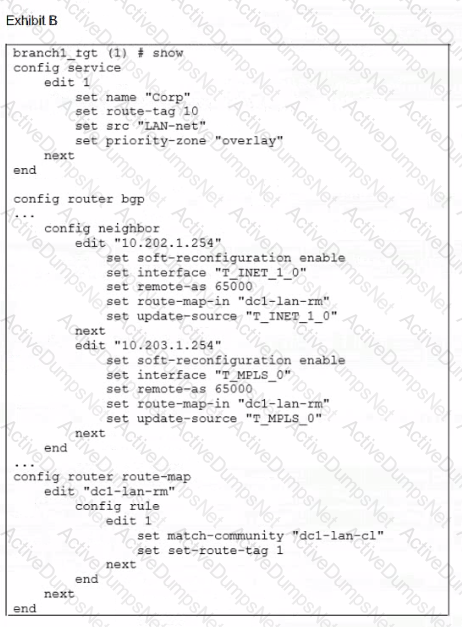
Exhibit A shows the SD-WAN rule status and the learned BGP routes with community 65000:10.
Exhibit B shows the SD-WAN rule configuration, the BGP neighbor configuration, and the route map configuration.
The administrator wants to steer corporate traffic using routes tags in the SD-WAN rule ID 1.
However, the administrator observes that the corporate traffic does not match the SD-WAN rule ID 1.
Based on the exhibits, which configuration change is required to fix issue?
What are two reasons why FortiGate would be unable to complete the zero-touch provisioning process? (Choose two.)
Refer to the exhibits.
Exhibit A -
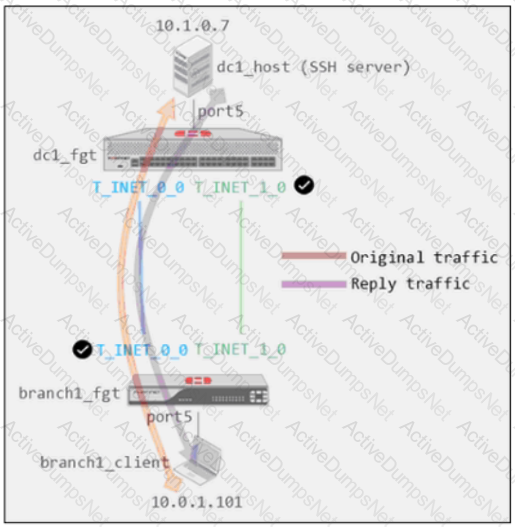
Exhibit B -
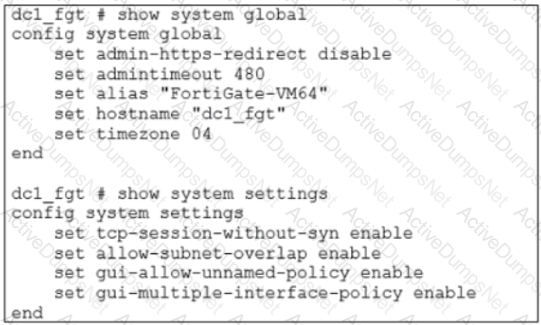
Exhibit A shows a site-to-site topology between two FortiGate devices: branch1_fgt and dc1_fgt. Exhibit B shows the system global and system settings configuration on dc1_fgt.
When branch1_client establishes a connection to dc1_host, the administrator observes that, on dc1_fgt, the reply traffic is routed over T_INET_0_0, even though T_INET_1_0 is the preferred member in the matching SD-WAN rule.
Based on the information shown in the exhibits, what configuration change must be made on dc1_fgt so dc1_fgt routes the reply traffic over T_INET_1_0?
Refer to the exhibit.
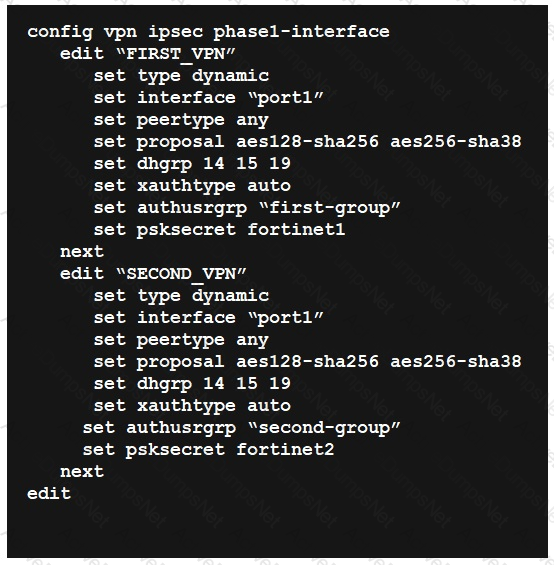
FortiGate has multiple dial-up VPN interfaces incoming on port1 that match only FIRST_VPN.
Which two configuration changes must be made to both IPsec VPN interfaces to allow incoming connections to match all possible IPsec dial-up interfaces? (Choose two.)
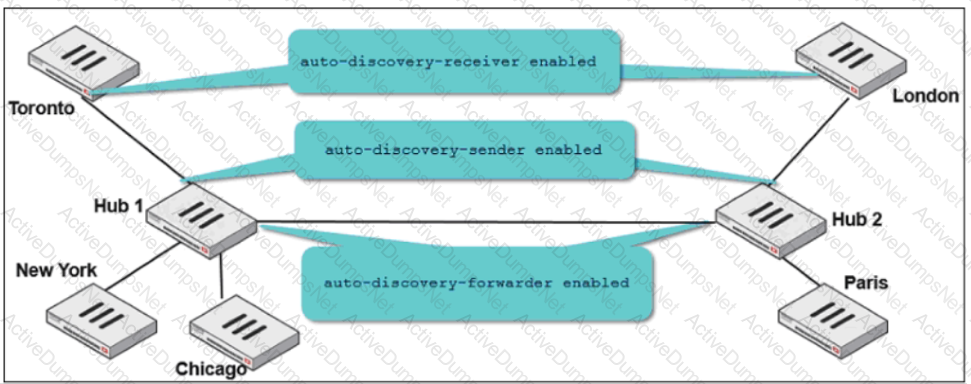
Two hub-and-spoke groups are connected through a site-to-site IPsec VPN between Hub 1 and Hub 2. The administrator configured ADVPN on both hub-and-spoke groups.
Which two outcomes are expected if a user in Toronto sends traffic to London? (Choose two.)
Refer to the exhibit.
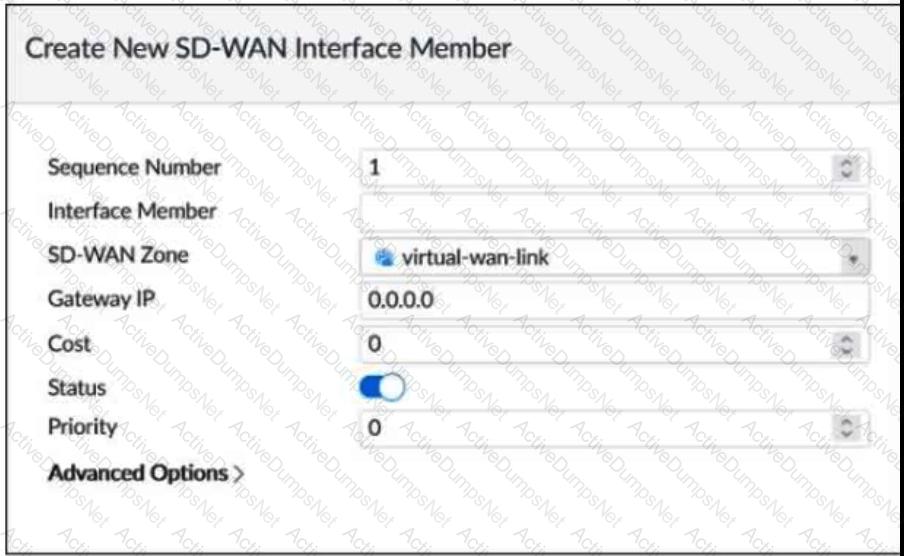
Which two SD-WAN template member settings support the use of FortiManager meta fields? (Choose two.)
Which two statements are correct when traffic matches the implicit SD-WAN rule? (Choose two.)
Which statement about using BGP routes in SD-WAN is true?
Which statement about SD-WAN zones is true?
In the default SD-WAN minimum configuration, which two statements are correct when traffic matches the default implicit SD-WAN rule? (Choose two )
Refer to the exhibit.
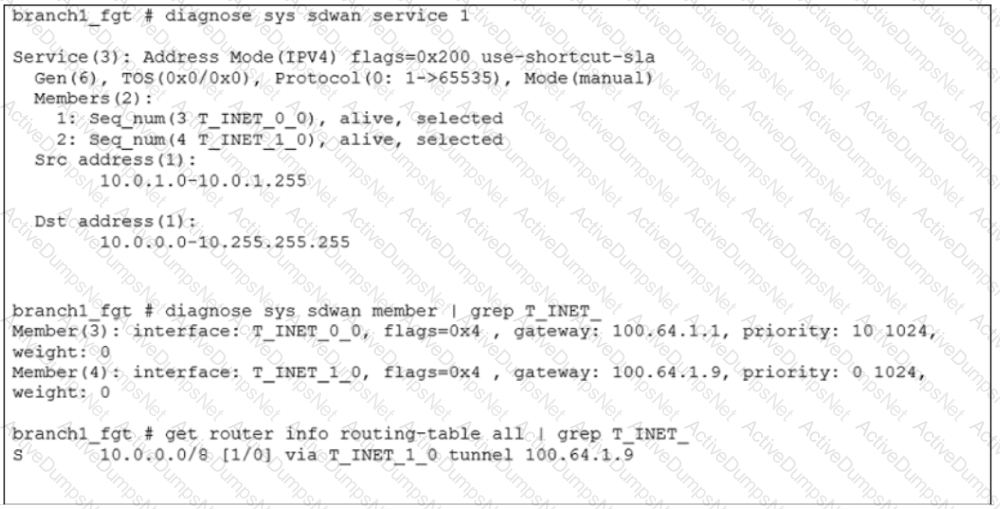
An administrator is troubleshooting SD-WAN on FortiGate. A device behind branch1_fgt generates traffic to the 10.0.0.0/8 network. The administrator expects the traffic to match SD-WAN rule ID 1 and be routed over T_INET_0_0. However, the traffic is routed over T_INET_1_0.
Based on the output shown in the exhibit, which two reasons can cause the observed behavior? (Choose two.)
Which diagnostic command can you use to show the SD-WAN rules, interface information, and state?
diagnose sys sdwan service
diagnose sys sdwan route-tag-list
diagnose sys sdwan member
What are two benefits of using the Internet service database (ISDB) in an SD-WAN rule? (Choose two.)
Refer to the exhibit.

The device exchanges routes using IBGP.
Which two statements are correct about the IBGP configuration and routing information on the device? (Choose two.)
Which statement about using BGP for ADVPN is true?
Refer to the exhibits.
Exhibit A

Exhibit B

Exhibit A shows the source NAT (SNAT) global setting and exhibit B shows the routing table on FortiGate.
Based on the exhibits, which two actions does FortiGate perform on existing sessions established over port2, if the administrator increases the static route priority on port2 to 20? (Choose two.)
The administrator uses the FortiManager SD-WAN overlay template to prepare an SD-WAN deployment. With information provided through the SD-WAN overlay template wizard, FortiManager creates templates ready to install on spoke and hub devices.
Select three templates created by the SD-WAN overlay template for a spoke device. (Choose three.)
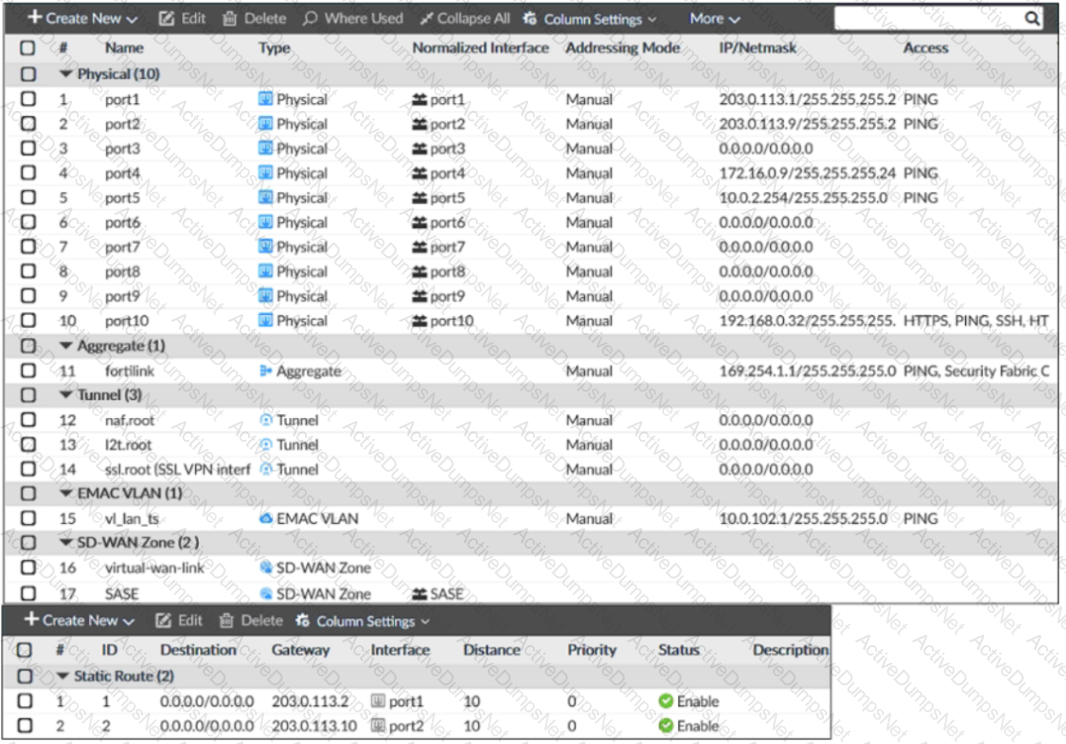
Exhibit B –

Exhibit A shows the system interface with the static routes and exhibit B shows the firewall policies on the managed FortiGate.
Based on the FortiGate configuration shown in the exhibits, what issue might you encounter when creating an SD-WAN zone for port1 and port2?
Refer to the exhibit.

Which configuration change is required if the responder FortiGate uses a dynamic routing protocol to exchange routes over IPsec?
What are two benefits of using forward error correction (FEC) in IPsec VPNs? (Choose two.)
What are two benefits of choosing packet duplication over FEC for data loss correction on noisy links? (Choose two.)
Which action fortigate performs on the traffic that is subject to a per-IP traffic shaper of 10 Mbps?
In a hub-and-spoke topology, what are two advantages of enabling ADVPN on the IPsec overlays? (Choose two.)
Refer to the exhibits.
Exhibit A
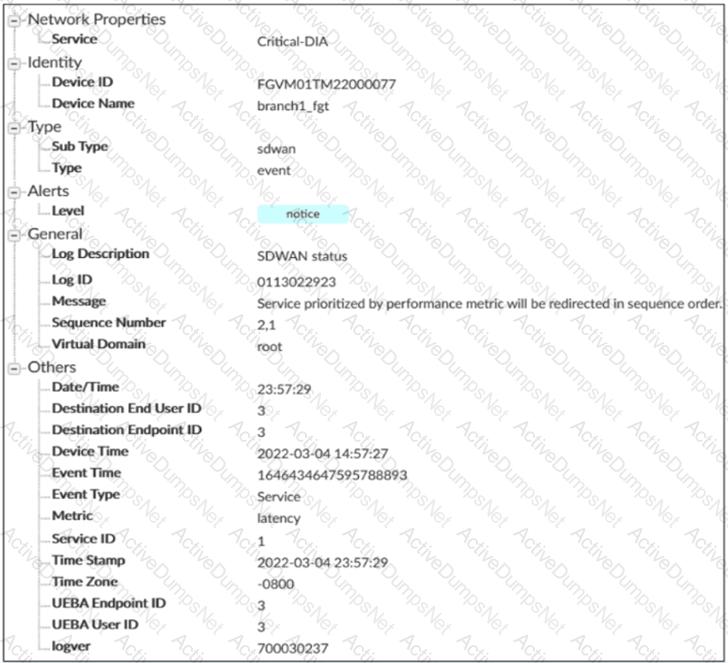
Exhibit B
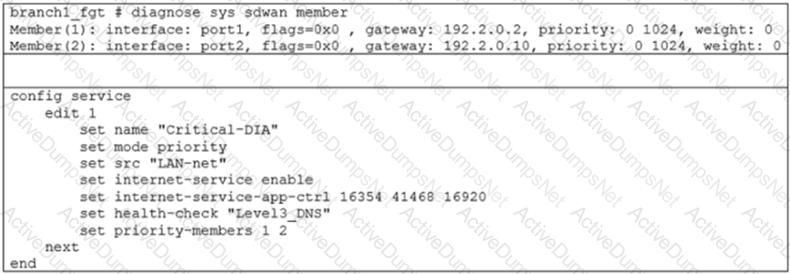
Exhibit A shows an SD-WAN event log and exhibit B shows the member status and the SD-WAN rule configuration.
Based on the exhibits, which two statements are correct? (Choose two.)
Exhibit.
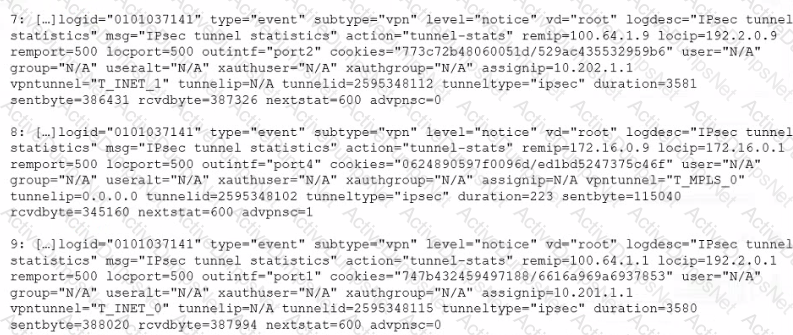
The exhibit shows VPN event logs on FortiGate. In the output shown in the exhibit, which statement is true?
Refer to the exhibits.
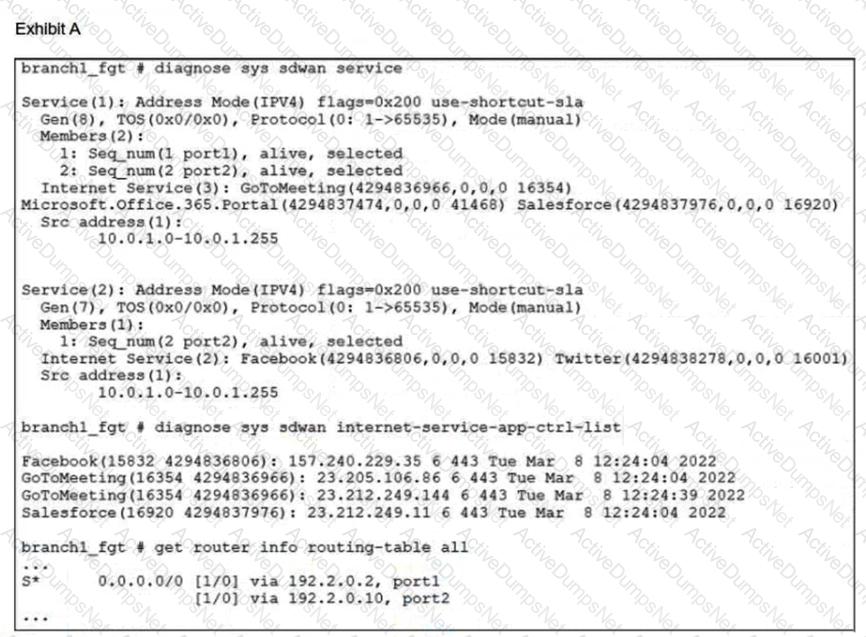
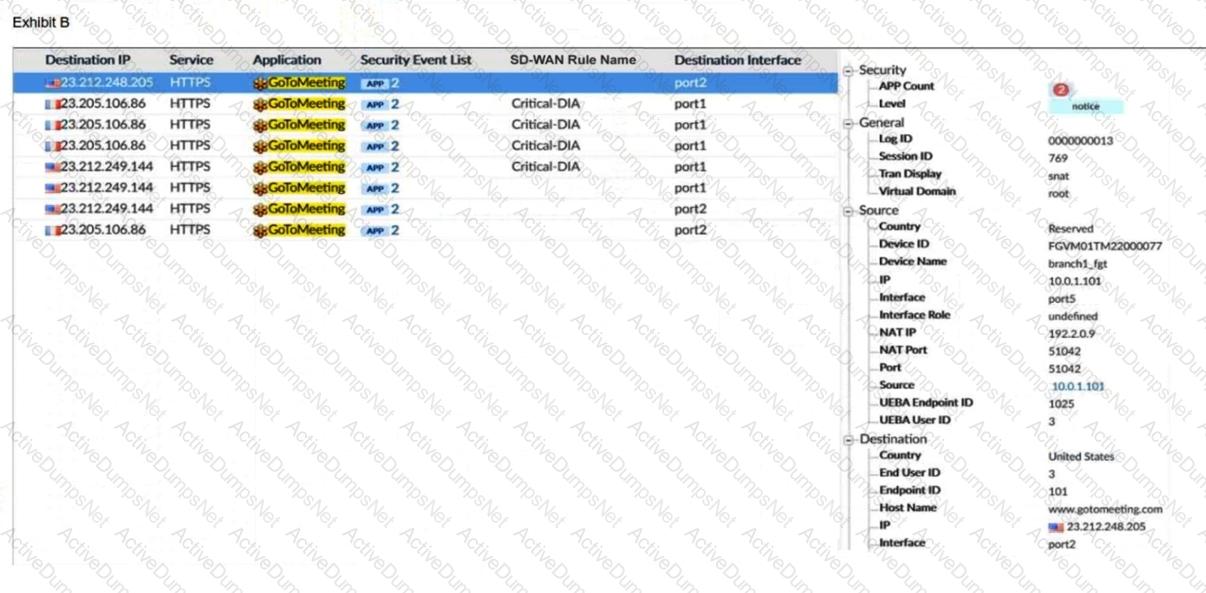
An administrator is testing application steering in SD-WAN. Before generating test traffic, the administrator collected the information shown in exhibit A.
After generating GoToMeeting test traffic, the administrator examined the respective traffic log on FortiAnalyzer, which is shown in exhibit B. The administrator noticed that the traffic matched the implicit SD-WAN rule, but they expected the traffic to match rule ID 1.
Which two reasons explain why the traffic matched the implicit SD-WAN rule? (Choose two.)
